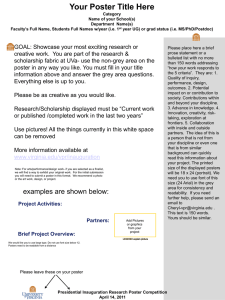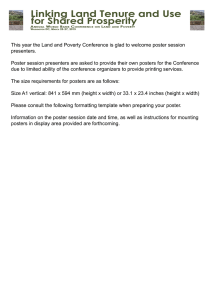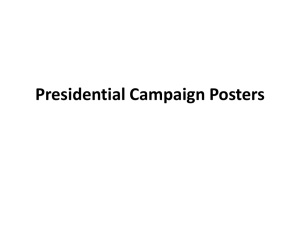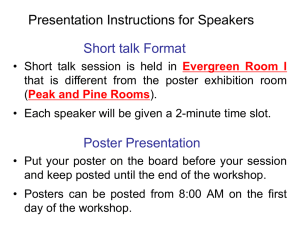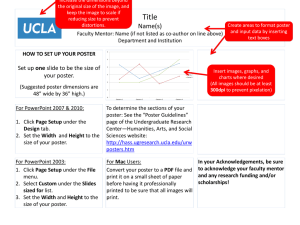Science-Communication-2011
advertisement
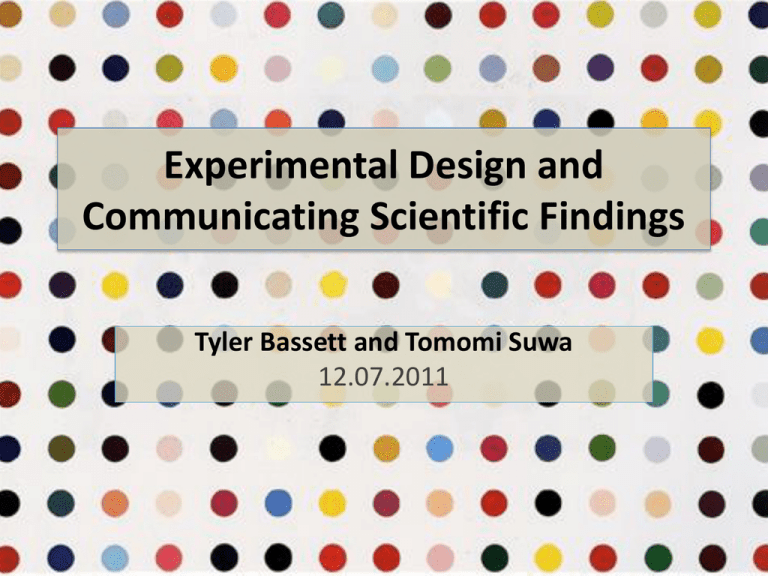
Experimental Design and Communicating Scientific Findings Tyler Bassett and Tomomi Suwa 12.07.2011 Designing A Scientific Study Thoughts on Experimental Design Two types of studies 1) Observational 2) Experimental Observational Study -Observe subjects and measure variables of interest without directly assigning treatments to the subjects -Less powerful – correlation does not imply causation Reasons for Observational Study: - Experiment is logistically impossible/impractical: rare species, stars, river - Experiment would violate ethical standards: human disease Manipulative Experiment • Vary one factor explicitly and keep other factors constant • “Cleaner” than observational study, easier to identify causative agent When one thinks of “science,” this is what they are thinking of! Elements of Experimental Design • • • • Independent vs. Dependent variable Control Replication Randomization Independent vs. Dependent variable Independent Variable – something that is intentionally changed or manipulated by the scientist Dependent Variable – something that might be affected by the change in the independent variable – What is observed and measured How do elevated soil nutrients affect plant growth ? NO3- PO3NH4+ What is an independent and dependent variable? Effect of independent var. on dependent var. Also referred to as predictor and response variables Control • The control and experimental groups must be identical in every way except for the introduction of a suspected causal agent into the experimental group (s). • Compare to an experimental group in a test of a causal hypothesis – often to demonstrate how much the causal agent changes the dependent variable How do elevated soil nutrients affect plant growth ? NO3- PO3NH4+ What is the control here? What does it mean? Control Add N Add P Add N,P Replication • Repetition of an experiment to test the validity of its conclusion Control Add N Add P Add N,P Randomization - Assign treatment randomly to an experimental group - Roll dice, random numbers table, Excel: “=rand()” function, www.random.org - Eliminate researchers’ bias or judgment Control Add N Add P Add N,P Why randomization and replication important? • Reduce/eliminate self-deception and bias. Control Add N Add P Add N,P Why randomization and replication important? • Biased experimental design Control Add N Add P Add N,P Graphs Dependent Var (unit) Title: The Effect of the independent variable on the dependent variable Independent Var (unit) Mean: shows differences between treatment groups. Error Bars: shows variability of data around the mean. Why control is important in this case? Plant Biomass (g) Title: The Effect of Elevated Nutrients on the Plant growth Control Add N Add P Add N, P Soil Nutrients Questions? Communicating Scientific Finding How do scientists communicate Science? Written Communication • Research Article • Book • News paper • Website/Blog Oral Communication Visual Communication • Presentation •Poster • Meeting • Lecture ppt • Lecture • Interview (e.g. radio) How do scientists communicate Science? Written Communication • Research Article • Book • News paper • Website/Blog Oral Communication Visual Communication • Presentation •Poster • Meeting • Lecture ppt • Lecture • Interview (e.g. radio) In Research Article, Presentation & Poster •Abstract •Introduction •Methods •Results •Conclusions Let’s have a mini-symposium! (20 min) a) Focal Poster -Presentation -Content b) Rest of the posters Which poster is most catchy/attractive? Why? Poster Evaluation -Are research questions and hypotheses stated clearly? -Does poster communicate the importance of the study? -What are the dependent and independent variables? -Are the tables and/or figures used to present the data effectively? -Are the conclusions related back to the hypothesis, key scientific concepts, and background research? Which poster is most catchy/attractive? Communicating Science: Poster Presentation *Borrowed some materials from: LiLynn Graves Web and Graphic Designer, CCMR Why poster? • More interactive than writing a paper or giving a talk • More time to talk with people • Can hang on the wall • You can be creative! Poster is basically a summary/outline of a research paper What to include? • • • • • • • • Title, name (Abstract) Background/Intro Methods Results Conclusion Acknowledgement (Citation) What to include • Title – 1-2 lines • Name and affiliations What to include (cont’d) • Background -Why important/interesting -Hypotheses *Get your audience interested in your work • Methods -Brief -Include photos and illustrate experimental design, if possible What to include (cont’d) • Results -Include tables, figures, stats and brief description. -Make sure your x and y axis are labeled clearly. -Keep it simple! Population size of Predator and Prey through Time Population Size 500 Prey Predator 250 0 10 Days 20 What to include (cont’d) • Conclusions - Address your hypotheses - Discuss why your results are interesting/important - “big picture” - future direction • (Literature cited) • Acknowledgement • • • • • • • • Title, name (Abstract) Background/Intro Methods Results Conclusion Acknowledgement (Citation) Organization Organization Colors Be considerate for people with colour-vision deficiency Poster in PowerPoint • Determine the size of a poster File -> page setup 46 x 38 inches • Font size no smaller than size 40 After you make a poster draft… • Print out a letter size draft and edit, edit, edit! • Get feedback from your teacher/mentor and peers “Peer Edit” Peer evaluation? • Get feedback from different people • Good practice to give/receive constructive criticism • Good motivation? Questions, comments?


